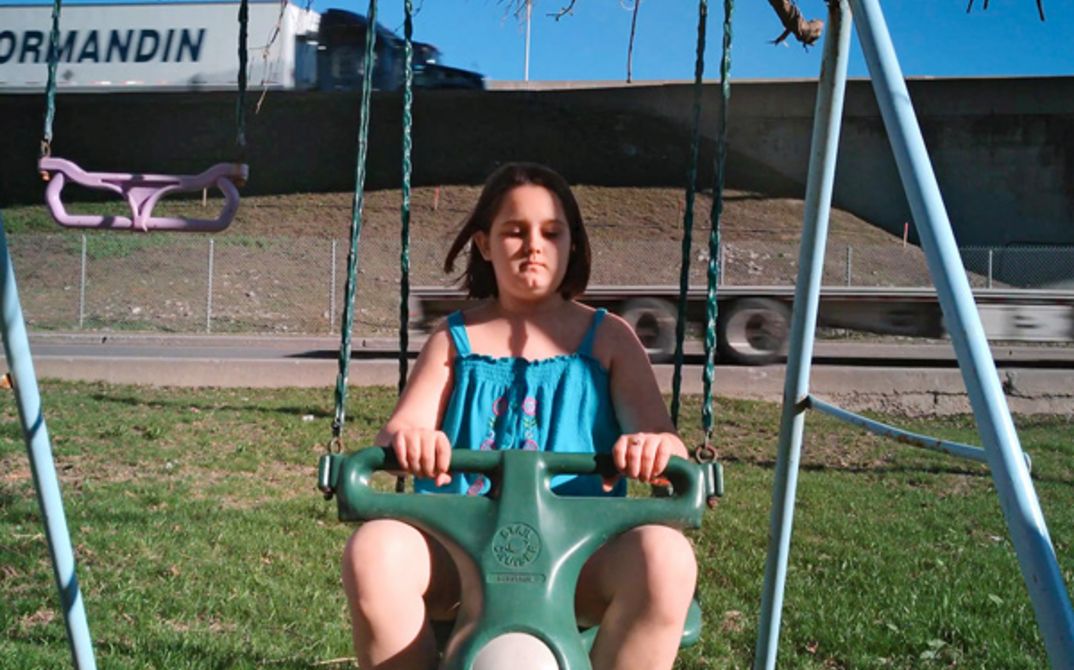62 min. English, French.
A traffic interchange on the edge of Montreal, where multi-lane highways criss-cross and curve around one another, perched on concrete pillars that carry them over the run-down neighbourhood below. A zone that is neither part of the city, nor of the suburbs, more the anonymous space in between. Its precise topography is anyway impossible to grasp, for the camera always clings patiently to the streets. At times, the focus is on pure observation, on watching traffic and pedestrians make their way through sun, shadow and signs as horns parp and engines roar, or alighting on all that indexes life beyond these roads: the missing dog poster in the dandelions, the wreath on the lamppost, the receiver off the hook in the phone box. At others, the directors’ hands are more keenly felt: the people placed in front of the camera carry awareness of it in their poses and the colours are just that little bit heightened, adding a thin layer of artifice to a place already oddly unreal. Perhaps it’s because no one sticks around long enough to detect its quiet appeal, everyone’s in too much of a hurry, as the chanson at the end gently chides: “It’s not only cars that go to 100. Time, too, rushes by.” (James Lattimer)
Brian M. Cassidy was born in 1977 in Poughkeepsie, New York, USA. He studied English Literature in New Paltz, New York, and completed a degree in Photography, Video & Related Media at the School of Visual Arts in New York City. Since 2004, he has collaborated with Melanie Shatzky on film and photography projects, and in 2005, they founded the film production company Pigeon Projects together. Cassidy also works as a curator and lecturer. Interchange is his third full-length film.
Melanie Shatzky was born in 1976 in Montreal, Canada. In 2002, she earned a degree in Photography from Concordia University in Montreal, and in 2006, a degree in Photography, Video & Related Media from the School of Visual Arts in New York City. Since 2004, she has collaborated with Brian M. Cassidy on film and photography projects. In 2005, they founded the film production company Pigeon Projects together. Melanie Shatzky also works as a curator and lecturer. Interchange is her third full-length film.
